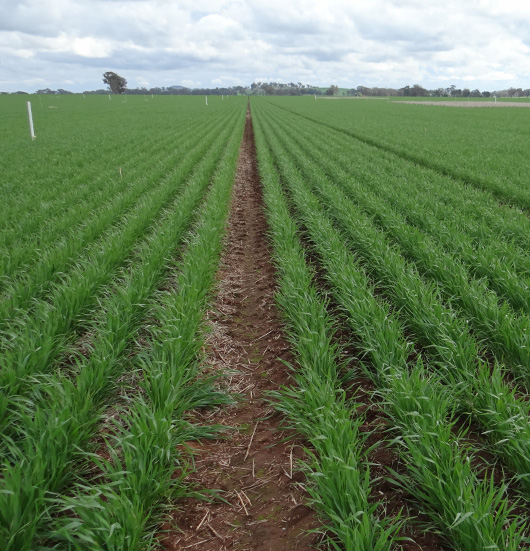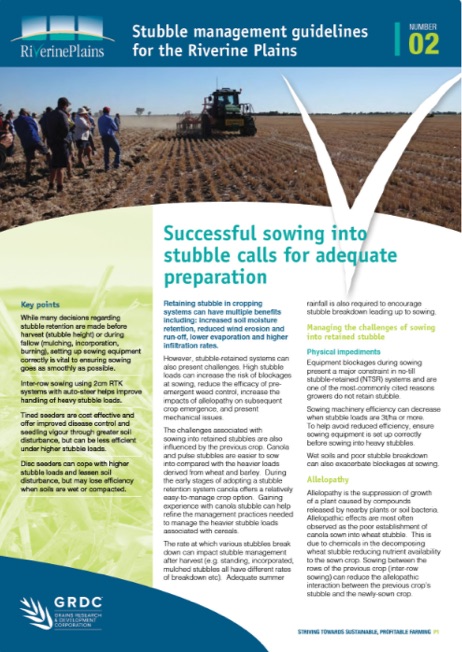Stubble Guideline 2: Successful sowing into stubble calls for adequate preparation
Practical tips on how to improve crop establishment when sowing into stubble using no-till stubble retained systems in the Riverine Plains.

Publication date
01 Dec 2018
Publication partner
This publication was supported by the Grains Research and Development Corporation.
LEARN PRACTICAL TIPS FOR SOWING INTO CEREAL STUBBLE
Guideline #2
Retaining stubble helps prevent moisture loss and reduces the risk of erosion, but it can also present challenges at sowing, due to the sheer amount of physical material that can remain after harvest, especially in high yielding crops.
This stubble management guideline describes how farmers can overcome some of the challenges associated with sowing into stubble, and offers practical solutions for farmers using different sowing systems. Our research into row spacing, early sowing, and discs versus tynes are discussed in detail, with specific reference to the Riverine Plains region.
What we discovered
We discuss a number of learnings from the Stubble project in this guideline. Our research suggests that;
- While many decisions regarding stubble retention are made before harvest, for example stubble cutting height, or during fallow (i.e whether to mulch, incorporate stubble for quicker breakdown, or burn to remove), setting up sowing equipment correctly is vital to ensuring sowing goes as smoothly as possible.
- Inter-row sowing using 2cm RTK systems with auto-steer helps improve handling of heavy stubble loads.
- Tined seeders are cost effective and offer improved disease control and seedling vigour through greater soil disturbance, but can be less efficient under higher stubble loads.
- Disc seeders can cope with higher stubble loads and lessen soil disturbance, but may lose efficiency when soils are wet or compacted.
Learn more about how to overcome the practical challenges of sowing into stubble.
NEWS
Discover unique perspectives on agriculture from across the Riverine Plains.
-
Livestock
-
People
-
Grains
-
Sustainability

